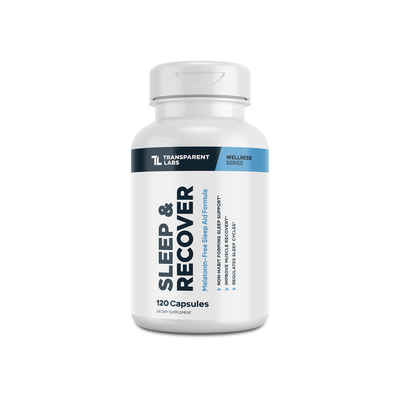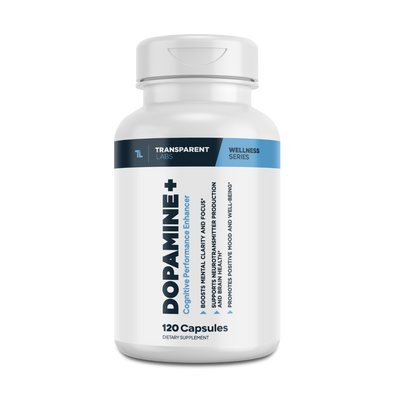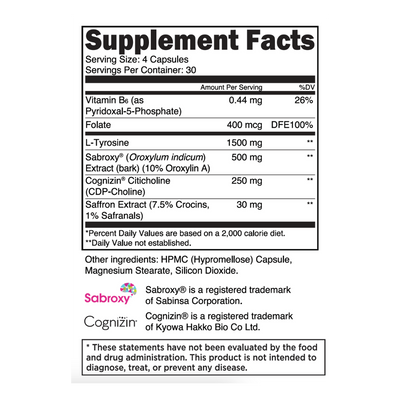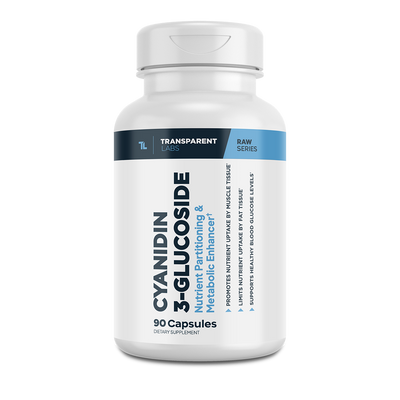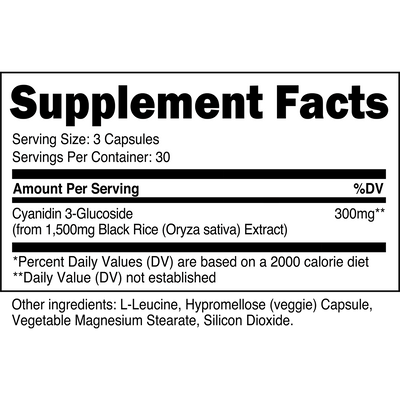The Science of Intermittent Fasting for Weight Loss and Longevity

What began as a cult-like following circa 2009, intermittent fasting, often referred to as "IF," is now a relatively mainstream lifestyle. Even those who don't actively follow any particular diet or workout routine have taken an interest in intermittent fasting.
So, why all the craze as of late?
Well, notable celebrities, like Dwayne "The Rock" Johnson, vouch for intermittent fasting, maintaining that it helps accelerate fat loss while preserving muscle mass. But as we all know, the media tends to sensationalize what big-screen stars do to stay in shape.
Yet, it's not necessarily appropriate to label intermittent fasting as just another "fad." Intermittent fasting is an intriguing topic among the scientific community and has been for quite some time. Numerous studies show that daily fasting and calorie restriction can extend lifespan in various organisms, including humans [1, 2].
Recent clinical trials also demonstrate the efficacy of intermittent fasting as a tool for weight loss [3]. However, extant human research is limited, and the advantages of using intermittent fasting for weight loss are a far cry from "significant" compared to a standard calorie-restricted diet.
Nevertheless, intermittent fasting is here to stay, and those who aren't on the bandwagon want to know if the hype behind it is justifiable. Is it a smart approach for those that want to burn belly fat and get lean? This article will fill you in on the pros and cons of intermittent fasting, what science has to say about this feeding pattern, and its implications on longevity and body composition.
What is Intermittent Fasting?
In recent years, intermittent fasting has proliferated as a lifestyle choice among fitness enthusiasts and bodybuilders alike. But what is intermittent fasting, exactly?
Intermittent fasting (IF) entails a daily "fasting window" — up to 20 hours in some cases — bookended by a limited timeframe for eating (i.e. "the feeding window"). Most people prefer the "16:8" fasting-feeding method: a 16-hour fasting window followed by an 8-hour feeding window.
A less-traditional approach is alternate-day fasting, which cycles between 24- to 48-hour fasting periods (e.g. fasting Saturday and Sunday and eating normally on weekdays).
Intermittent fasting is not a "diet" per se — it's a lifestyle choice involving methodical meal timing and periodic calorie deprivation. Thus, "intermittent fasting diet" is a bit of a misnomer.
The term "diet" describes an individual's food choices and macronutrient intake. Meal frequency is an independent factor. Therefore, you can follow any diet, whether it's a ketogenic, Paleo, or carnivore diet, while also adhering to an intermittent-fasting regimen.

Does Intermittent Fasting Work for Weight Loss?
Intuitively, the shorter feeding window of intermittent fasting means you'll be eating larger meals (albeit less frequently). However, daily fasting isn't a reason to stuff your face with as much food as possible when the feeding window rolls around. Binge eating is not synonymous with merely eating large meals after a brief fast. Binge eating is characterized by compulsive overeating, especially for gratification or to alleviate emotional stress.
Whether you follow intermittent fasting or not, you need to be mindful of what you eat and how much you eat to lose weight. As such, intermittent fasting may be advantageous for people who prefer to unwind with controlled, sizable meals instead of frequently eating smaller meals throughout the day (we will discuss this topic in more depth later.) Not to mention, no more worrying about prepping 40+ meals for the week ahead!
On that note, the next section will show you how to follow intermittent fasting and time the daily fasting-feeding cycle!
How to Do Intermittent Fasting
Traditional 16:8 intermittent fasting has two daily phases (or "windows") — a 16-hour fasting window and an 8-hour feeding window. During the fasting window, you abstain from foods and liquids that contain calories so your body can enter a fasting state. However, drinking water and small amounts of calorie-free/very-low-calorie beverages (e.g. black coffee and fresh-brewed tea) is acceptable/encouraged during this time.
Once you complete the fasting phase/window, your feeding window begins. The feeding window is when you eat all your macros for the day — typically spread across two or three meals — before starting the next fasting phase. Hence, the "fasting window" is the time gap between the previous day's last meal and the following day's first meal.
For example, if you finish eating around 7 PM on Sunday and begin your first meal on Monday at 1 PM, that amounts to an 18-hour fasting window. Technically, your body isn't in a fasting state the moment you finish your last bite of food for the day. If you've ever had major surgery that required anesthesia, the doctor likely advised you not to eat anything within 12 hours of going under the knife; that was to ensure you were in a fasted state by the time they put you to sleep.
Assuming your feeding window ends an hour or two before going to bed and you sleep for 7 to 8 hours, you should be in the fasting state by the time you wake. Hence, the time spent abstaining from calories beyond that is when the putative metabolic and longevity benefits of intermittent fasting kick in [7].
Setting Up Your Own 16:8 Intermittent Fasting Regimen
Let's take a look at an example of a 16:8 intermittent fasting schedule so you can get a better idea of how it might look throughout the day:
- 7:30 AM — Wake up
- 7:30 AM to 2:30 PM — Daytime Fasting Window
- 2:30 PM — Meal 1 ("Breakfast")
- 6:00 PM — Meal 2
- 10:00 PM — Meal 3 (Last meal of the day)
- 11:30 PM — Bedtime
As for how much to eat during the feeding window (and at each meal), simply follow your macronutrient/calorie goals and portion them out in a balanced fashion across each meal. The key is meeting your total daily calorie goal as consistently as possible and include a generous amount of quality protein, healthy fat, and fibrous veggies with each meal (as well as complex carbs sources, if you're not a carbophobe).
Just as an example, if your macronutrient guidelines for the day are 180 g protein, 150 g carbohydrate, and 65 g fat, then you might split them up like this:
- 7:30 AM — Wake up
- 7:30 AM to 2:30 PM — Fasting Phase
- 2:30 PM — Meal 1: 60 g protein/60 g carbohydrate/20 g fat
- 6:00 PM — Meal 2: 55 g protein/60 g carbohydrate/20 g fat
- 10:00 PM — Meal 3: 65 g protein/30 g carbohydrate/25 g fat
- 11:30 PM — Bedtime
Don't worry if your macros aren't spread equally across each meal. The important thing is eating plenty of protein at each meal and avoiding extremes, like partitioning all of your fat for the day in one meal, then all of your carbs in another meal, and so on.
How Long Should the Fasting Window Be?

The 16:8 time ratio is not set in stone. The fasting window can be longer or shorter than 16 consecutive hours. Some people prefer a slightly longer fast, maybe 18 to 20 hours per day. Others simply forgo breakfast and wait until lunchtime or early afternoon to eat their first meal, which usually comes out closer to 15 or 16 hours of fasting followed by an 8- to 9-hour feeding window.
If you find it better to fast for 16 hours on weekdays and 18-19 hours on weekends, then go for it. There is no all-encompassing rule for how long you should fast every day. You can, and should, adjust the amount of time you fast to suit your schedule and goals.
Hopefully, the above gave you have a better idea of how to do intermittent fasting. Now, the more pertinent question is, does intermittent fasting work? Is daily fasting healthy?
Benefits of Intermittent Fasting: Is it Healthy?
The preponderance of research on fasting pertains to non-human primates, rodents, and organisms many branches apart from humans on the evolutionary tree. The findings of these studies may be extrapolated to humans, thereby making any of the potential merits theoretical in nature. Consequently, there are myriad subjective benefits of intermittent fasting that remain to be validated in controlled clinical trials.
The good news is that human research on the metabolic and longevity aspects of intermittent fasting is burgeoning as of late, and preliminary evidence is generally promising. The following subsections highlight relevant studies and how they apply to intermittent fasting benefits.
Intermittent Fasting and Weight Loss
While intermittent fasting for weight loss might seem tantamount to "yo-yo" dieting, it's not. You're in for a rude awakening if you think fasting for a few hours every day grants you a "free pass" to binge on processed junk and foods loaded with sugar while body fat just melts off.
Frankly, you won't lose weight if you eat too many calories; there's no way around that paradigm [8]. A sensible diet is essential for getting lean, regardless of how often you eat.
With that in mind, a handful of clinical trials have shown that intermittent fasting for weight loss may be advantageous for overweight people by encouraging proper energy balance [9].

Surely, you're thinking, "Won't I be ravenous if I'm fasting for long hours every day?" Surprisingly, many people who follow intermittent fasting find that the hunger pangs during fasting are not an issue. There are two likely reasons for this phenomenon:
- First, you likely won't be awake for a good chunk of the fasting (assuming you eat your last meal within a few hours of bedtime). Therefore, you're only awake for about half of the fasting window, maybe even less.
- Second, after you follow an intermittent-fasting schedule for several weeks, hunger signaling is biologically entrained to not be as intense throughout the day. The axis between your brain and gut catches on to the times at which you normally eat.
Furthermore, intermittent fasting advocates often note that they have better mental clarity and more energy during the fasting window, making them worry less about food throughout the day. Granted, such anecdotes need to be taken with a grain of salt since several studies suggest that eating smaller, more frequent meals may reduce hunger cravings compared to eating one or two big meals daily [10].
It's ultimately a matter of preference and individual response. There's nothing "magic" about intermittent fasting for weight loss beyond the fact that it may help people control their energy balance more effectively.
Does Intermittent Fasting Increase Growth Hormone Levels?
During fasting, the brain increases growth hormone (GH) production, which subsequently activates lipolysis (fat breakdown) so triglycerides can be used for energetic purposes [11]. Growth hormone is like a signal for your cells that "unlocks" the energy available in fats. This is an intrinsic survival mechanism in humans since fat is our primary source of long-term fuel.
Growth hormone, like branched-chain amino acids (BCAAs), is also protein-sparing/anti-catabolic, especially during fasting [12]. In other words, it protects lean body mass from being broken down and used for energy when fasting.
But to be fair, slight pulsatile increases in growth hormone are likely not a significant contribution to fat loss associated with intermittent fasting. The notion that fasting "supercharges" your growth hormone production is nonsense.
Intermittent Fasting for Improving Blood Sugar Balance
Type-2 diabetes is an epidemic metabolic disease characterized by pancreatic dysfunction and cellular insulin resistance; this disease currently affects nearly half a billion people worldwide. The symptoms and health ramifications of type-2 diabetes are quite debilitating, even life-threatening in severe cases.
The promising news is that intermittent fasting may have antidiabetic benefits by increasing adiponectin levels during the fasting window. For example, a 15-day study in healthy men found that intermittent fasting for 20 hours daily significantly increased circulating adiponectin levels and improved insulin sensitivity [13]. While more research is necessary to confirm these benefits, it's an encouraging start.
The Gut Microbiome and Intermittent Fasting
Most of the excess fat tissue we hang onto is a conglomeration of white fat cells that secrete fat-derived hormones called adipokines. The other (much less abundant) type of fat tissue in humans is brown adipose tissue.
In contrast to white adipose tissue, brown adipose tissue is favorable for weight loss since it is metabolically demanding. Thus, the ratio of brown fat to white fat tends to be higher in lean individuals than overweight people [14].
The microbes in the gastrointestinal tract of humans (i.e. the gut microbiome) play intricate roles in body weight regulation, notably by "browning" white adipose tissue [15]. Recent research has shown that intermittent fasting appears can promote the browning of white adipose tissue by reshaping the gut microbiome [16]. In turn, intermittent fasting may increase basal metabolic rate (BMR) and support weight loss.
Likewise, it's imperative to nourish the gut microbiome with prebiotic fiber as this ensures the "friendly" bacteria stick around and work their microbial magic.
Aging: Will Intermittent Fasting Make You Live Longer?
Understanding the longevity benefits of intermittent fasting is, well, complicated. A multitude of variables influence aging and lifespan, some of which we have no control over. But first, let's get the cat out of the bag: Aging is an inescapable part of all life.
Arguably the most crucial factor that drives the aging process is stress, but not the palpable tension we experience after an unnerving event. Instead, the stress we're talking about is insidious on a cellular level. Chronic cellular stress, which scientists refer to as oxidative stress, details a state in which the body lacks antioxidants and nutrients to defend itself from toxins, free radicals, and reactive oxygen species [17].
When oxidative stress persists, it starts to degrade and destroy the fundamental components in cells, including proteins [18]. Importantly, this stress is what erodes the very molecules that make us who we are: DNA (deoxyribonucleic acids) [19].
DNA is comparable to an instruction manual for cells in that it dictates which proteins and enzymes your body produces. Ultimately, DNA is how your body "expresses" genes.
As we age, the body is continuously being "broken down" and "rebuilt" on a cellular level. The integrity of DNA is imperative for this to happen in a normal/healthy fashion.
Consider the analogy of putting a jigsaw puzzle together over and over and over again. Now, what happens if you start to lose pieces of that puzzle? You can't rebuild it completely — it becomes fragmented, ruining the "big picture."
That is what happens when DNA is damaged/lost as we age. So, where does intermittent fasting come into play?
Does Intermittent Fasting Work as a Method of Anti-Aging?
Animal studies suggest intermittent fasting may have metabolic and longevity benefits independent of calorie restriction [20]. Daily fasting in humans and rodents has been shown to reduce the risk of various forms of cancer, heart disease, hypertension, Alzheimer's disease, Parkinson's disease, type-2 diabetes, obesity, and several other life-threatening health conditions [21].
Further evidence demonstrates that intermittent fasting reprograms metabolic pathways and optimizes the foundations of cellular function, thereby promoting longevity [22]. Specifically, intermittent fasting appears to increase the expression of telomerase — an enzyme that extends telomere sequences, specifically in somatic (body) cells.
What in tarnation is a telomere, you ask?
In short, a telomere is a repetitive DNA sequence found at the end of a chromosome that functions as a protective "cap" for coding (read: "important") DNA. When cells replicate/divide, telomeres are truncated, thereby preserving the essential DNA base pairs.
As an analogy, telomeres are like the plastic shoelace caps that prevent the laces themselves from fraying. For example, the coding base pairs of mitochondrial DNA (mDNA) are necessary for creating enzymes that convert energy from the chemical bonds in nutrients into the energetic "currency" of cells, ATP (adenosine triphosphate).

Perturbations in mDNA occur as part of the aging process and response to oxidative stress. Consequently, cells start to lose their capacity to generate energy from nutrients. Recent research has shown that dysfunctional mDNA drives and maintains cellular senescence, a ramification of aging where cells stop dividing because of DNA damage [23]. DNA in the nucleus of cells, where the majority of DNA is located, is also liable to oxidative stress.
After so many cell divisions, telomeres reach a critical length, and the cell becomes either senescent (i.e. unable to reproduce or grow) or it perishes. These ramifications prevent cells with damaged DNA from reproducing.
Telomere shortening is a natural biological process. We can't arrest it — not yet, at least. Every time a cell replicates or divides, our "life clock" is effectively moved forward. Intermittent fasting won't stop that from happening.
But what if we prevent telomeres from shortening? Will we become immortal?
Well, not really.
DNA can be damaged regardless of telomere length. And unfortunately, life is random and can be cut short from many things not related to aging or DNA.
However, intermittent fasting and other lifestyle choices may indeed slow the telomere-shortening process and extend life expectancy.
Aging and Telomeres: What's the Connection?
We lose a lot of DNA as we age. At birth, the average human has between 11,000 - 12,000 base pairs in every telomere sequence and 194 telomeres per cell (since there are 46 chromosomes).
As we age into our senior years (65+), it's estimated that we may have as few as 1,500 base pairs in those 194 telomeres. That's a whopping 87.5% reduction throughout a lifetime. Progressive shortening of telomeres increases the risk of cancer, heart disease, and likely many other chronic diseases [24].
As you can imagine, there are infinitely many variables that influence the rate at which we age. Though telomeres inevitably shorten over time, we can slow or irrevocably hasten that process. Notably, tobacco use, excess alcohol consumption, obesity, poor nutrition, and lack of exercise can all accelerate telomere shortening, leading to rapid aging and premature death [25].
One study found that women who smoked a pack of cigarettes daily lost an "additional" five telomere base pairs per year, which is about 20% more than the control group (non-smokers) lost [26]. These findings suggest that smoking can cut two years off a person's lifespan every decade that passes, and that's assuming smoking doesn't also increase the risk of life-threatening diseases like lung cancer (which it unequivocally does).
The good news is that healthy lifestyle choices, such as controlling calorie intake, eating certain micronutrients, and exercising regularly, can significantly reduce the rate at which telomeres shorten in healthy cells [27]. A recent rodent study showed that exercise and calorie restriction effectively increased the lifespan of rats by as much as 66% [28]. Albeit rats have much shorter lifespans than we do — it's unreasonable to assume that we would live until we're 150+ years old by doing the same.
Using Intermittent Fasting for Weight Loss and Longevity
Ultimately, if your fitness goal is to lose weight, get lean, and support longevity, intermittent fasting might be for you. But more important is controlling your calorie intake and leading an overall healthy lifestyle.
Intermittent fasting isn't magic, and it has a long way to go in terms of compelling research that backs the hype. There's a pressing need for controlled human studies investigating the potential benefits of intermittent fasting to see if this type of eating pattern does indeed add years to our life expectancy. Admittedly, it's challenging to study, given all the different variables that impact aging processes.
Nevertheless, many people have switched to an intermittent lifestyle and love it. If you're antsy to give intermittent fasting a shot, here are some things to keep in mind:
Starting Your Intermittent Fasting Lifestyle
First off, you need to calculate how many calories your body requires to maintain your body weight (our Macro and Calorie Calculator will help). As a rule-of-thumb: If you want to lose weight, eat about 500 calories less than your daily maintenance calorie needs.
However, there is no cookie-cutter calorie intake or macronutrient breakdown that will suit everyone's specific demands. You'll need to experiment a bit and see what works best for you.
How Much Protein to Eat on Intermittent Fasting?
Protein is essential in the diet since it provides the "building blocks" (amino acids) for proteins in body tissues, especially skeletal muscle. Not to mention, amino acids in dietary protein are crucial for many other biological processes.
As such, you don't want to skimp on protein intake while following an intermittent fasting lifestyle, regardless if your goal is to build muscle, lose weight, or live until you're 159 years old.
Research suggests that around 0.8 to 1.2 grams of protein per pound of lean body mass (per day) is plenty for active individuals and gym-goers alike [29].
Carb and Fat Intake for Intermittent Fasting
Depending on your activity level, body size, genetics, and goals, your ideal carb intake can vary significantly. For most people, however, carbohydrates are the least important macronutrient.
Why?
Well, mainly because many of us live highly sedentary lifestyles in a cubicle, and our bodies can create glucose from protein and fat, if necessary.
However, eating a moderate amount of carbohydrates is suitable for many people, especially those who regularly exercise. For example, if you hit the gym during the fasting window and your post-workout meal is your first meal of the feeding window, then it's generally wise to incorporate a generous amount of carbs in this meal.
Whether you follow a keto diet or a diet with carbs is ultimately up to your discretion, but just keep in mind that carbohydrates are typically less important than protein and fat.
After accounting for calories from protein and carbs, the "leftover" calories will come from fats. Intuitively, this means you'll eat more fats if you follow a low-carb diet and vice versa.
For more in-depth weight-loss nutrition tips, check out: How to Lose Weight - A Detailed Guide



